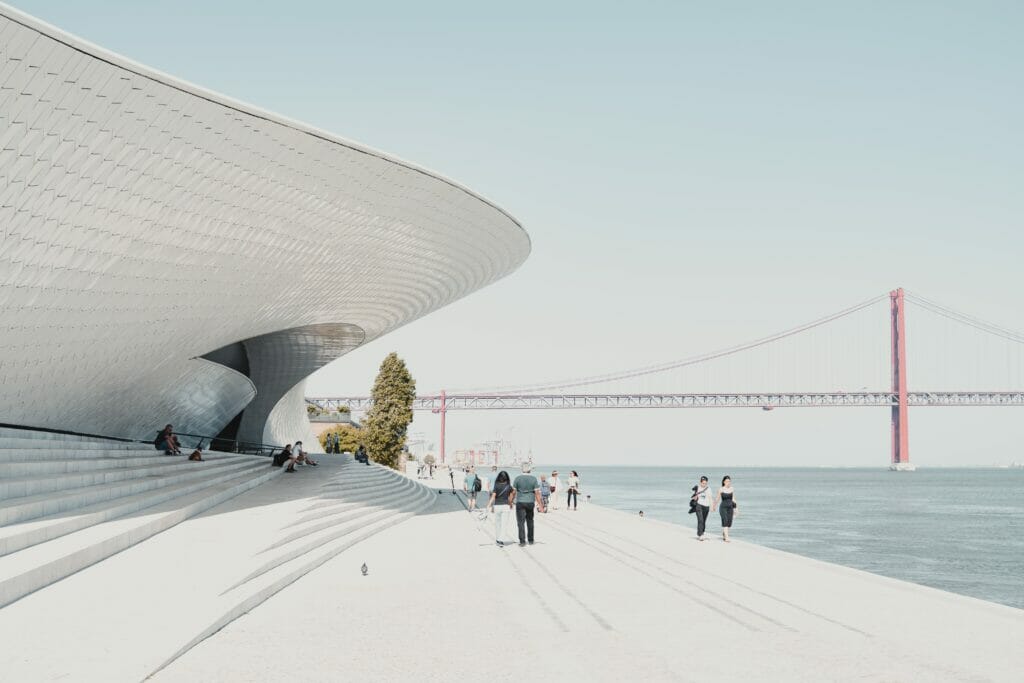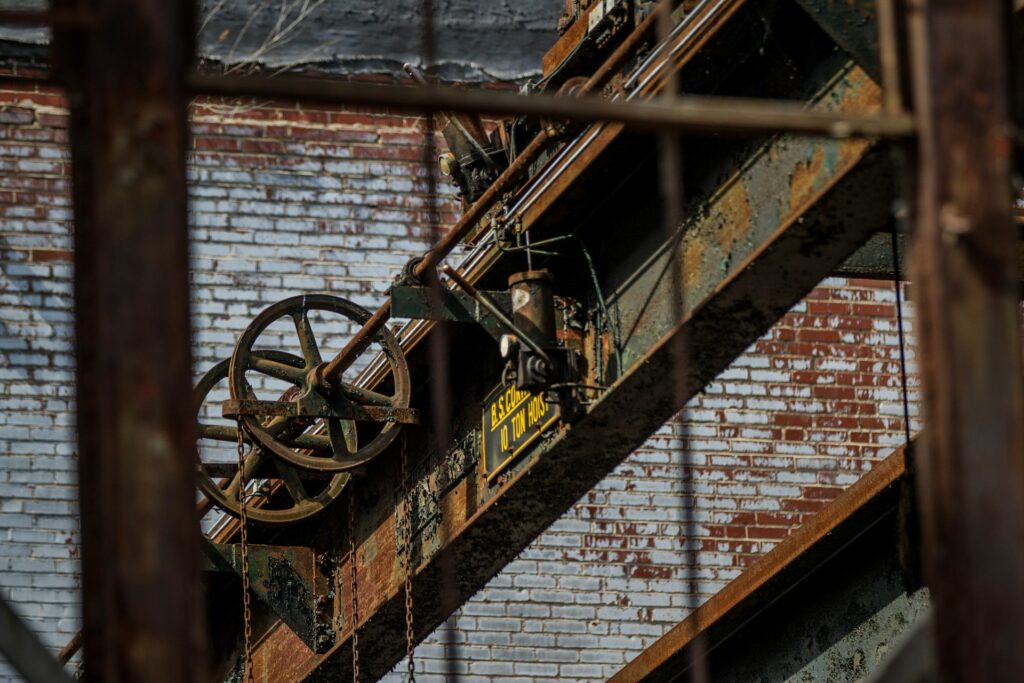Museums are a must-visit for those travelling to Portugal who seek to delve into the country’s immense cultural heritage. Portugal offers a rich variety of museums, from ancient art and royal carriages to contemporary and experimental exhibits.
These museums provide a glimpse into Portuguese culture, perfect for art lovers, history buffs, and curious travelers. Explore our top 10 museum picks across Portugal for unique experiences that deepen your connection to the country.
1. Museu Nacional de Arte Antiga (National Museum of Ancient Art)
Located in a 17th-century palace, The Museu Nacional de Arte Antiga is one of the largest collections of medieval European and Asian art in Portugal. The museum is particularly noted for its collection of art from the Middle Ages to the early 19th century, including masterpieces by masters such as Hieronymus Bosch, Dürer and Raphael.
The Asian collection in the museum features some fine objects of China, India and Japan, yet it has an unique flavor due to Portugal´s maritime efforts but also inclinations towards eastern countries. That range includes intricate jewelry, textiles, ceramics and religious art, as well as a peaceful garden that looks out onto the Tagus River.
Location: Rua das Janelas Verdes, 1249-017 Lisbon

2. Museu Calouste Gulbenkian
This museum is home to the private art collection of Calouste Gulbenkian, an Armenian oil tycoon that collected one of the best collections in the world. It is divided into two main collections: the Founder’s Collection, which comprises over 6,000 years of art worldwide and the Modern Collection featuring predominantly Portuguese art from the late 19th century to the present day.
Showcasing everything from ancient Egyptian artifacts and Persian carpets to works of Monet, Renoir, and Turner, this museum provides a unique aspect into the arts of Europe as well as the East. One of Lisbon´s iconic cultural landmarks, it also has beautiful gardens.
Location: Av. de Berna 45A, 1067-001 Lisbon

3. Museu de Arte, Arquitetura e Tecnologia (MAAT)
MAAT is a lavish modern contemporary museum with an opulent building resembling something from the future, located along the banks of the Tagus River. The structure, designed by British architect Amanda Levete, is a modern architectural marvel in itself. Located on Pier 14 in Yerba Buena Gardens at the heart of SOMA, the museum explores a combination of themes in which technology influences artistic expression and societal change.
The museum offers a schedule of rotating exhibitions by up-and-coming and established artists from around the world, along with regular workshops, lectures, and cultural programs that connect participants to emerging trends in contemporary art-making processes. The Museum of Art, Architecture and Technology (MAAT) is located in Belém by other historical monuments making it a mandatory stop for all art lovers and architecture enthusiasts.
Location: Avenida Brasília, 1300-598 Lisbon

4. Museu do Fado
In Alfama, one of the oldest districts in Lisbon, this museum is dedicated to Fado, a musical genre that arose in the city’s working-class neighborhoods. Museu do Fado explores the establishment of Fado as a genre back in the 19th century and all major developments that were made in its production.
The museum showcases its collection through exhibits including audio recordings, historical artifacts, photographs, musical instruments and personal objects belonging to legendary Fado performers such as Amália Rodrigues, the “Queen of Fado” Interactive booths allow visitors to listen to Fado songs and come away with a strong understanding of the emotions that flow through this sad, yet beautiful Portuguese song style.
Additionally, the museum event holds live music shows, giving you a sense of how the old-time music feels like.
Location: Largo do Chafariz de Dentro 1, 1100-139 Lisbon

5. Museu Nacional dos Coches (National Coach Museum)
Museu Nacional dos Coches One of a kind museums which has the largest collection of carriages from 16th century. It provides an interesting look at the grandeur and craftsmanship that went into royal and aristocratic transportation. The collection consists of ceremonial and state carriages, many of which have highly ornamental coach work with elaborate gold leaf and velvet interiors.
Of all the items displayed here, the most extravagant is an 18th-century coach used in Portugal’s grandest processions by King João V. In contrast to historical carriages, the museum is modern architectural space located in a contemporary building designed by architect Paulo Mendes da Rocha.
This means toggling through centuries of European history and craftsmanship in one visual journey.
Location: Avenida da Índia 136, 1300-300 Lisbon

6. Museu Nacional Machado de Castro
One of Portugal’s most important fine arts museums, the Museu Nacional Machado de Castro in the historic university city of Coimbra. Named for 18th-century Portuguese sculptor Joaquim Machado de Castro, the museum occupies an old episcopal palace built atop a Roman forum site.
A large underground structure dating from the 1st century A.D., the Roman cryptoporticus, is the star attraction of the museum. The museum has a collection of Middle Ages to Renaissance sculptures, religious art, paintings and decorative arts. It also exhibits exceptional examples of ivories, ceramics, textiles and pieces of furniture that are testimony to the historical and artistic development in Portugal over the centuries.
Location: Largo Dr. José Rodrigues, 3000-236 Coimbra

7. Museu Serralves
Museu Serralves, the leading museum of contemporary art in Portugal, is located in Porto on the country’s northern coast and home to one of Europe’s superior culture venues. The building was created by architect Álvaro Siza Vieira, as it combines his renowned minimalist contemporary style.
The museum’s temporary exhibitions concentrate on contemporary art from the decade of the 60s up to the present, with a particular emphasis on Portuguese art and its relationship with international artistic practices.
Serralves also boasts the Art Deco Serralves Villa and a lovely park that shows off outdoor art installations and sculptures. The only museum in New York City devoted exclusively to contemporary art, MoMA PS1 is the performance, studio and exhibition space affiliated with The Museum of Modern Art. It provides a venue for emerging artists who experiment with various genres from installation and photography to painting and other traditional forms.
Location: R. Dom João de Castro 210, 4150-417 Porto

8. Museu Nacional do Azulejo (National Tile Museum)
Museu Nacional do Azulejo: This museum principally celebrates the art of the azulejo, ceramic tiles so intrinsic a part of Portuguese architectural heritage. Situated in a 16th-century building itself wonders of architecture, the museum is based at the Madre de Deus Convent. The collection showcases five centuries of tile production, from Moorish-inspired designs to vivid Baroque tiles and modern ceramics.
Its centerpiece is an eight-panel tile mural depicting pre-earthquake Lisbon, showcasing the “Lisbon of Yesterday” and a bygone era. The exhibition walks visitors through the history and techniques of azulejo, what tiles say to us about Portuguese culture, and how tile making changed in Portugal over time.
Location: Rua da Madre de Deus 4, 1900-312 Lisbon

9. Museu da Farmácia
The Museum of pharmacy reveals more than 1000 years and different cultures of pharmaceutical history. There are ancient Egyptian medical instruments, 19th-century European apothecary sets and traditional remedies from indigenous cultures as far away as you can imagine. Exquisitely restored shops from the past, like a 19th-century Portuguese apothecary and a Chinese pharmacy from Macau, invite wandering.
A museum that offers visitors a glimpse of the different approaches towards medicine over the centuries—from mystical healing methods to pharmaceutical-based treatments; it is an unusual place for history buffs as well medical students.
Location: Rua Marechal Saldanha 1, 1249-069 Lisbon

10. Museu da Eletricidade (Electricity Museum)
The Museu da Eletricidade is housed in the former Tejo Power Station, featuring stunning early 20th-century industrial architecture. The museum offers fascinating insights into Portugal’s energy history, highlighting industrialization and the specific role of electricity. The original machinery, boilers, and turbines are displayed, allowing visitors to see how generators produce electricity.
The museum addresses topics such as renewable energy and environmental sustainability, offering educational activities for children and families.
Now part of the MAAT complex, it combines history, science, and art in an engaging way for all ages.
Location: Av. Brasília, Central Tejo, 1300-598 Lisbon

When is the best time to visit Portugal?
When speaking about the best time to go to Portugal, it all comes down pretty much to what do you want and prefer more, but for the most part, spring (March-May) or autumn (September-October) are generally considered the best period. With temperatures between 15°C-28°C, it’s an ideal time to explore cities, countryside, and coastlines without summer crowds.
Portugal is in full bloom during the spring, making it a gorgeous setting with areas such as the Douro Valley. Fall offers warm days and the wine harvest season, making it especially appealing for wine lovers visiting Douro or Alentejo.
Summer (June to August) is the high season and offers warm, sunny days and long evenings, but this also means more crowds and higher prices – especially on the Algarve’s beaches. But if you want a beach holiday this is the perfect time to take advantage of Portugal’s beautiful coast.
Winter (November — February) is quiet and cooler, which makes it perfect for sightseeing holidays, getting short city breaks without masses but museums are fully supplied and resorts hardly ever busy. The southern region, especially the Algarve, remains a refuge from colder conditions as temperatures are mild.
Frequently Asked Questions About The 10 Best Museums In Portugal
What are the most popular museums to visit in Portugal?
Among the most popular museums are Museu Calouste Gulbenkian and Museu Nacional de Arte Antiga, in Lisbon, the Serralves Museum, in Porto; and the National Coach Museum and National Tile Museum. There are different museums that cater to various interests: art, history and culture.
Are museums in Portugal free to visit?
Although there is an entrance fee in many museums in Portugal, it also exists some that residents and visitors can pass it free on Sundays and public holidays until 2:00 PM. Certain days, some smaller local museums may offer free admission or discounts.
What are the opening hours for museums in Portugal?
All of Portugal’s museums are generally open from 10:00 to 18:00 but opening hours my vary. Several museums closed on Monday, so check an individual museum schedule before to go.
Is there a tour of Portuguese museums?
Indeed, most museums in Portugal provide guided tours both in Portuguese and English. Other bigger museums, such us the Museu Nacional dos Coches and Museu Calouste Gulbenkian offer an audio guide to visitor.
Can I take photos inside museums in Portugal?
Photography is so-so depending on the museum. Generally, photography without a flash is allowed in most museums but we may not be able to shoot every painting or object of art and taking pictures with a flash will be restricted as well. Be sure to review the rules for snapping pictures indoors.
What makes the Calouste Gulbenkian Museum special?
This museum houses a world-class art collection spanning from Ancient Egypt to 20th-century masterpieces, featuring works by artists like Rembrandt, Monet, and Renoir. It’s known for its serene atmosphere and beautiful gardens.
Are there museums dedicated to Portugal’s unique culture, like azulejos?
Yes! The Museu Nacional do Azulejo (National Tile Museum) in Lisbon is dedicated to the iconic Portuguese ceramic tiles, showcasing their history and intricate designs.
Which museum is ideal for families or kids?
The Maritime Museum in Belém and the Portugal dos Pequenitos in Coimbra are great for families. They offer interactive exhibits, scale models, and fascinating insights into Portugal’s rich maritime history.
Do any museums in Portugal combine art and modern architecture?
Absolutely! The MAAT in Lisbon and the Serralves Museum in Porto are perfect examples, offering cutting-edge exhibitions in stunning contemporary architectural spaces.




